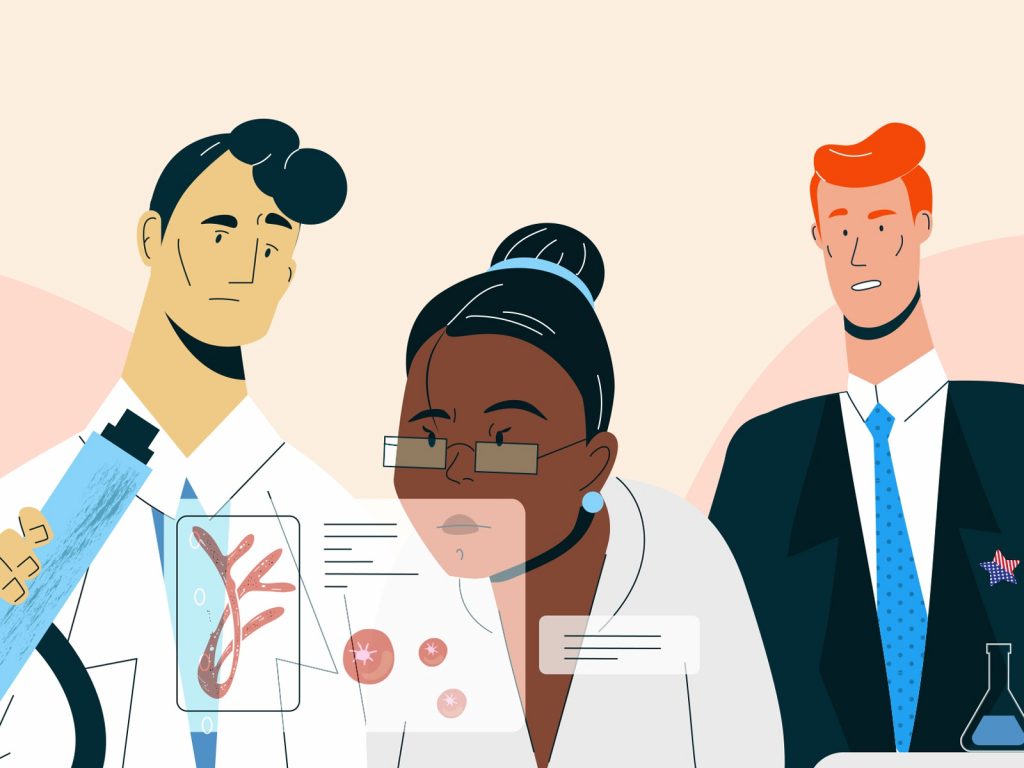
Bollworm caterpillars are the worst enemies of cotton crops. Their infestations at the ball or the fruition stage can pave the way for complete economic devastation for the farmer. Over the years, bollworms have been destroying cotton crops and bringing down the yield. Research in the area led scientists to the gene Cry2B, extracted from a bacterium called Bacillus thuringiensis. By means of advanced science, we have been able to isolate these genes from the bacterium and insert them into the gene structure of the cotton. Once inserted, these genes make the cotton plant resistant to the attack of the bollworms. These genes then enable the cotton plant to manufacture proteins that protect the plant by a different mechanism. Thus, the problem that lingered on for years was easily solved by the advancement in scientific research.
This was one drop from a vast ocean that represents how we have been tinkering with even the living organisms. The new genome techniques have facilitated further research in this arena. Scientists have been able to develop new strains of organisms with enhanced characteristics. These new inventions have now been capitalized and led to the emergence of a new market of “Genetically Modified Organisms”. Bio-Pharma has been investing in this market, and their sure-shot way to protect their profits is by earning patent. However, this path has not been devoid of hurdles. Patenting life forms and GMOs is a contentious topic riddled with a myriad of legal and ethical issues.
All about Genetically Modified Organisms
All organisms have a blueprint inside their bodies that determine their characteristics: body shape, color, size, or hair. This blueprint is in the form of a pattern of genes inside our cells that align themselves in different combinations to yield a variety of resulting characteristics. Hence, scientists have experimented with these patterns of genes, altering and rearranging them to yield the desirable characters. There can be an alteration in the already present pattern of genes, or a new gene can also be introduced. The resulting organisms are called Genetically Modified Organisms when the gene pattern is altered in a laboratory setting for favorable results. It could include a cow with enhanced milking capacity, a crop with greater resistance to pests, or even oranges with fewer seeds and more juice.
The benefits of GMOs are wide-ranging. GMO crops are known for an early maturing period, fewer water requirements, high yields, higher pest resistance, enhanced nutrient levels, better taste, and a lot more. A 2014 meta-analysis Trusted Source of 147 studies found that GMO products increase yields by 22% and farmer profits by 68%. Since GMOs enhance the yield, it promotes enhanced food security. Higher nutrient levels would also lead to healthier bodies. GMOs crops are internally resistant to pests and insects. This eliminates the use of pesticides, insecticides, and other chemicals that are also known to harm the environment. GMO animals are also known for similar benefits.
However, they do have a shady side. The toxins introduced in GMO crops or other edible products can be harmful to human health. Experts believe that their intake might expose one to the risk of infertility or even cancer. They are also believed to be detrimental to environmental health. When these crops are made resistant to insects, they usually do so by a mechanism that transfers certain toxins inside the gut of those insects and chokes them to death. This might eventually lead to a loss of biodiversity. The endangered Monarch butterfly is one such example. It might also have some side effects on the plants or the animals themselves. There is also a threat of transfer of GMO genes to the wild varieties of animals and plants that can have devastating effects on the ecosystem.
Ethical and Legal issues concerning Lifeforms Patent
These negative sides of GMOs have initiated a debate on their use and promotion. The experimentation to yield GMOs has raised a lot of ethical and legal issues. One section of protestors against the use of GMOs is the environmental activists. They fear that the use of GMOs can lead to the extinction of a variety of insects and other creatures against which the crops are made resistant. Their extinction would disturb the natural ecological balance, which would not be suitable for the environment. This could also wipe out the wild varieties. Loss of biodiversity is a threat already looming over our heads for a long time and has been amplified by GMOs.
Animal rights protectors have also been vouching against GMO technology. This is because animals are mute and cannot voice their concerns. Their rights are not considered before tinkering with their DNA. Their genome is changed and experimented which might or might not have favorable outcomes. This is considered as being cruel.
These ethical issues permeate into the legal sphere and question the utility of granting patents to life forms and GMOs. Many countries have been reluctant in granting such patents owing to these reasons. Moreover, there has been much ambiguity surrounding the criteria to be used to induct life forms and GMOs in the patenting category. Ethical and legal issues mount together to make it a rugged terrain to be dealt with. However, this grey area has attracted sufficient attention in recent years, owing to the capitalist tendencies.
Current Patent framework and Challenges

Traditionally, India has been against granting patents to life forms and GMOs. Aligning with this stance, India also demanded a review of Article 27.3 of the TRIPS Agreement and advocated against such patents. However, TRIPS guidelines directed all the member nations to allow patenting microorganisms and related technology. Accordingly, amendments were made in the Patents Act, 1970.
India witnessed a watershed moment in its patenting history that changed the landscape of patenting life forms and GMOs. This moment was marked by the case Dimminaco A.G. v. Controller of Patents and Designs. In this case, the appellant had applied for a patent of the process of creation of a “Bursitis vaccine” that included a live virus. It was to protect the poultry from Bursitis infection. However, this request was denied because of the reason cited that it did not fall into the category of an “invention” as per the provisions of the Patents Act.
Consequently, they approached the hon’ble HC of Calcutta. This case raised some pertinent questions regarding patenting living organisms, whether it would qualify as an invention, and the criteria used for its scrutiny. The reason cited by the respondents in their defense was that since the manufacturing process included a living organism, the process cannot be covered under the ambit of patentable inventions. However, the bench declined this reasoning and held that it fell into the category of patentable inventions as all the prerequisites are being fulfilled. The invention was capable of commercial exploitation and led to an improvement in the product. Court held that since the invention was vendible, it could be patented. The judgment can be condensed in the fact that a process can be patented if the product produced as a result was vendible.
This opened the doors of the Patents Act for an amendment. The Amendment Act of 2002 inserted Section (3j). Section 3(j) states what are not inventions. The following are not inventions within the meaning of this Act – plants and animals in whole or any part thereof other than micro-organisms but including seeds, varieties, and species and essentially biological processes for production or propagation of plants and animals.
Thus, the amendment paved the way for the patent of microorganisms. However, the point of contention that still prevails in it is the ambiguity in the definition of “micro-organisms”. Also, where Section 3(j) talks about parts of plants or animals, it is not quite certain whether parts include the roots, leaves, organs, or even the cells because even if it covers the cells, most of the time such inventions alter the genetic makeup of cells, altering their character altogether. Comparing to this, micro-organisms also include some single-celled organisms, which are nothing but “cells”.
Additionally, India has also brought the Protection of Plant Varieties and Farmers’ Rights Act (PPV&FR Act), 2001. This legislation is aimed at aligning Intellectual Property rules pertaining to plant varieties with the TRIPS guidelines. This was because Article 27.3 of TRIPS allowed the member states to exclude plants and animals from patent protection provided they have installed alternative protections for their protection.
Comparatively, the patenting of GMOs is fairly easier. Even though they fall in the category of living organisms, they do not occur naturally in the environment and need significant human intervention which allows them to pass the required tests of the Patents Act. The most landmark case falling in this territory is that of Monsanto Technology LLC. v. Controller General of Patents. It was a case about patenting a transgenic plant with increased heat tolerance, technically about a GMO plant. The Patents office declined to grant a patent for this invention. Hence, the appellants approached the Intellectual Property Appellate Board (IPAB). The IPAB upheld Monsanto’s right to get a patent stating that the invention included a substantial human intervention and tissue culture steps such that they no longer constituted essentially biological processes for the production or propagation of plants and animals, thereby allowing the patent grant.
In a more recent case of Monsanto Technology LLC & Ors. v. Nuziveedu Seeds Ltd. & Ors., the Delhi HC, gave a judgment completely opposed to the previous case. It denied a patent to Monsanto Technology over genetically modified cotton. However, it was set aside by the Hon’ble SC in its judgment passed in 2019 and reinstating the rule laid down in Monsanto Technology LLC. v. Controller General of Patents.
Conclusion
Despite the frameworks put in place to protect patent rights relating to living forms and GMOs, we find a severe lack of clarity. Many definitional deficiencies dilute their impact and pave the way for exploitation of the existing loopholes. There is a need for stricter rules to be installed to balance the rights of both research companies and the consumers. Inclining the rules too much on the side of companies can be detrimental to the general public, who would not be able to take advantage of such new inventions due to high prices.
Moreover, if the scale dips too much in the favor of the general public, it might disincentivize the companies and kill creativity. Big research corporations put a lot of effort and resources into research and inventions. Not providing them patents to capitalize their inventions would be tantamount to denying them the fruits of their labor. The patent in living forms and GMOs is a budding and significant territory in contemporary capitalist and competitive environments. It can help India’s development as strong laws will act as incentives for indigenous inventions and attract foreign investments.
Editor’s Note
The author of this article talks about the scope and challenges of Patents in Intellectual Property Rights. It talks about genetically modified organisms and how its benefit is wide-ranging. The author also talks about the ethical and legal issues with the current framework. Finally, the author concludes that It can help India’s development as strong laws will act as incentives for indigenous inventions and attract foreign investments.